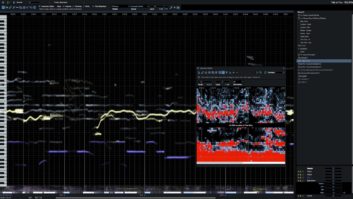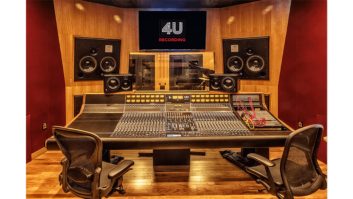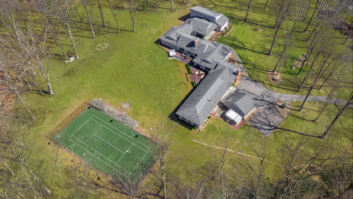
Incredibly, the Rolling Stones Mobile Studio may have more rock n’ roll cred than the Stones themselves. Sure, it was used by the legendary Glyn Johns to record the band at the height of its powers, but the pioneering recording truck also captured historic albums like Led Zeppelin’s III and IV, The Who’s Who’s Next, and music by Bob Marley, Black Sabbath, Frank Zappa and Fleetwood Mac, among others. You can find out all this and far more in a new mini-documentary released online by The Stones themselves.
The Rolling Stones Mobile Studio was built in the early 1970s for a few reasons, chief among them being that the band would be able to stop burning through expensive studio time in uptight London studios. With its own recording setup, the band could rock whenever it felt like. Not stated in the documentary but likely another pressing reason was that recording the group somewhere besides easy-to-find urban studios would keep the band away from the prying eyes of the press, the fans and the law.
While Jagger initially wanted to rent equipment to create a temporary studio inside his Stargroves Estate out in the country, road manager and original band co-founder Ian Stewart suggested that they essentially recreate the control room of London’s Olympic Studios on the back of a truck. After consulting with Johns and other engineers, they outfitted the truck with cutting-edge analog equipment of the day, much of it custom-built since there were few dedicated pro-audio brands at the time. No expense was spared, which meant that the mobile studio had features like its own 3M M79 tape machine, which cost an eye-watering $79,000 at the time—nearly $500,000 today.
10 Things We Learned From Glyn Johns’ “Sound Man”
Nonetheless, the expensive experiment paid off as it resulted in two of the band’s most revered albums—1971’s Sticky Fingers and 1972’s Exile On Main Street. Other acts inquired about renting the mobile studio for recording albums and capturing live concerts, and soon the rolling facility became a thriving side-hustle that ultimately resulted in a nice ROI for the band’s initial outlay. As Jason Tawkin, recording engineer at Canada’s National Music Centre explains in the documentary, the mobile studio made it possible for legendary moments like the explosive drums of Led Zeppelin’s “When The Levee Breaks”—the cannon-like sound of John Bonham playing in a Headley Grange stairwell, captured with just two microphones—to be enshrined in the annals of rock forever.
The studio has far more history than what’s mentioned in the documentary, of course. It was used to record Iron Maiden, Santana, some of Neil Young’s Harvest, live albums by Dire Straits (Alchemy: Dire Straits Live) and Lou Reed (Live in Italy), and was even mentioned multiple times in Deep Purple’s “Smoke on the Water.” Central to the studio was a classic Helios recording console—the second one ever built—assembled by Olympic Studios chief technician Dick Swettenham, who went on to upgrade the desk five years later. The desk has 32 Helios mic/line inputs, 25 with 3-band EQ, filter and inserts. There’s also 48 tape returns, 53 inputs to the mix buss, and 24 mono multitrack busses with pan.
It was all very cutting-edge at the time, but by the mid-1980s, the truck’s equipment had become out of date and the Stones themselves were working only sporadically, leading the band to simply sell it—to bandmember Bill Wyman, who used it for various projects and businesses until early 1996 when he, too, sold it off. The buyer—NYC’s LoHo Studios—shipped the mobile studio to New York City, where it was used for a few years to record acts like The Ramones and Patti Smith at the late, great punk divebar, The Continental. By the turn-of-the-millennium, however, digital recording was on the rise, analog was on the wane and the well-worn truck was on its last legs. As a result, the mobile studio was sold once again in 2001, this time to Calgary, Canada’s National Music Centre. Once the Museum bought the vehicle, staffers attempted to drive the truck to Calgary, but could only limp it as far as Chicago before the mobile studio broke down for good and had to be towed the rest of the way.
Fortunately, today the studio has been fully renovated, is back in working order and is a star attraction for the National Music Centre, garnering music fans and recordists from around the world. Not only that, but the studio can still be rented for recording, allowing new generations of musicians and recording pros to get a taste of what it was like to work in the analog heyday of the legendary Rolling Stones Mobile Recording Studio.







